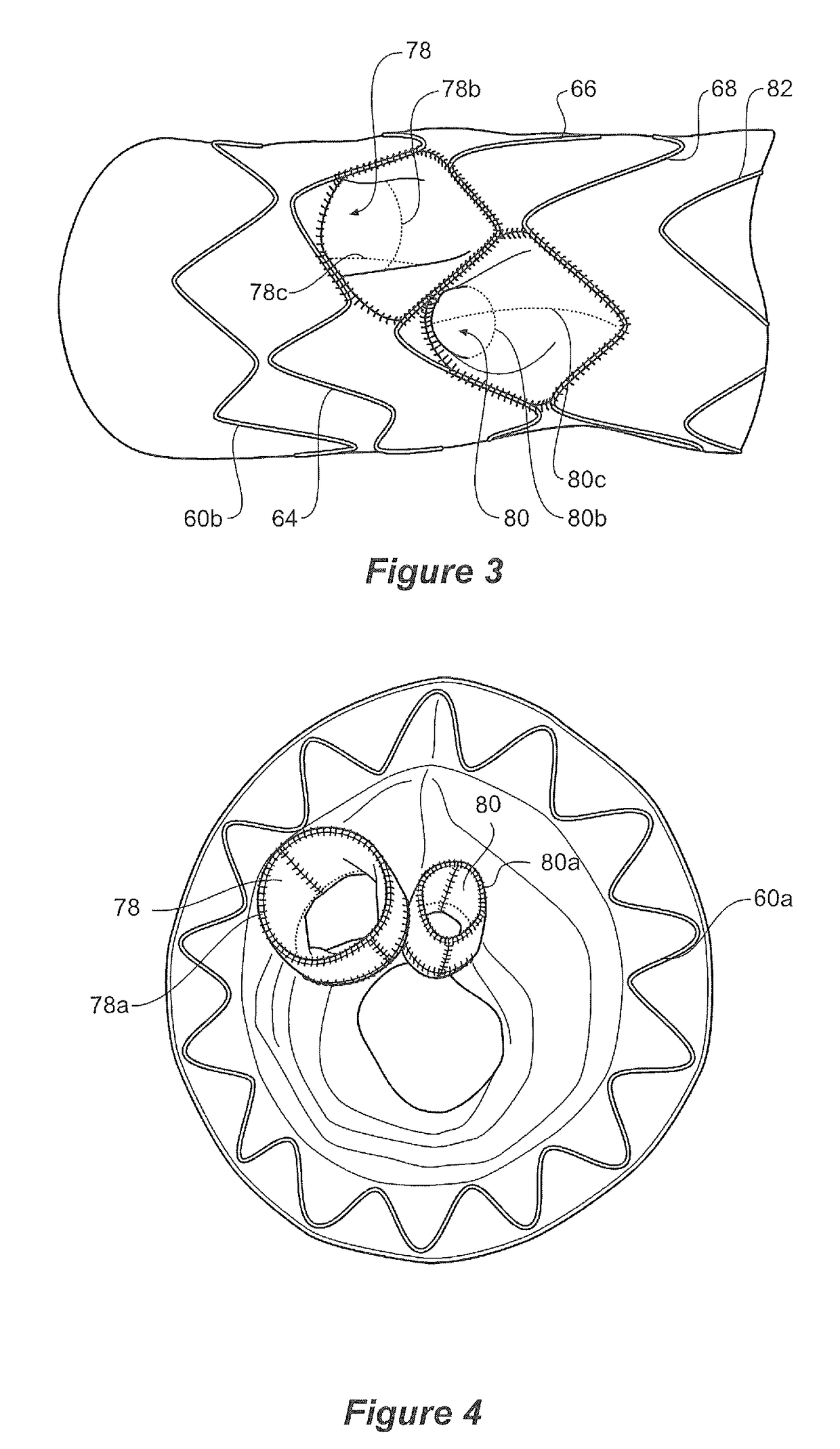Thoracic aorta stent graft
a stent and aorta technology, applied in the field of stent grafts and stent grafts, can solve the problems of difficult access to fenestrations through corresponding vessels, such as the brachiocephalic and the left brachial arteries, and achieve the effect of improving the fenestration efficiency and reducing the difficulty of grafting
- Summary
- Abstract
- Description
- Claims
- Application Information
AI Technical Summary
Benefits of technology
Problems solved by technology
Method used
Image
Examples
Embodiment Construction
Or Mode(s) / if Applicable
[0059]FIGS. 1 to 6 show an embodiment of stent graft according to the present invention. In this embodiment the tubular body 52 of this embodiment of stent graft 50 comprises a proximal portion 54, an intermediate portion 56 and a distal portion 58 as shown in FIG. 5.
[0060]Referring to FIG. 1 it can be seen that the proximal portion 54 comprises a tubular body of a biocompatible graft material and is supported by self expanding zig zag stents 60a and 60b. The stent 60a is internal to provide a smooth sealing surface to engage against the wall of the ascending aorta, and the stent 60b is external. The proximal portion may have a diameter from 35 to 50 mm.
[0061]The distal portion 58 is again formed from a tubular body of a biocompatible graft material and is supported by self expanding zig zag stents 82 and 84. The distal portion 58 can have a diameter in the range of from 30 to 40 mm.
[0062]The intermediate portion 56 is supported by self expanding zig zag sten...
PUM
 Login to View More
Login to View More Abstract
Description
Claims
Application Information
 Login to View More
Login to View More - R&D
- Intellectual Property
- Life Sciences
- Materials
- Tech Scout
- Unparalleled Data Quality
- Higher Quality Content
- 60% Fewer Hallucinations
Browse by: Latest US Patents, China's latest patents, Technical Efficacy Thesaurus, Application Domain, Technology Topic, Popular Technical Reports.
© 2025 PatSnap. All rights reserved.Legal|Privacy policy|Modern Slavery Act Transparency Statement|Sitemap|About US| Contact US: help@patsnap.com



